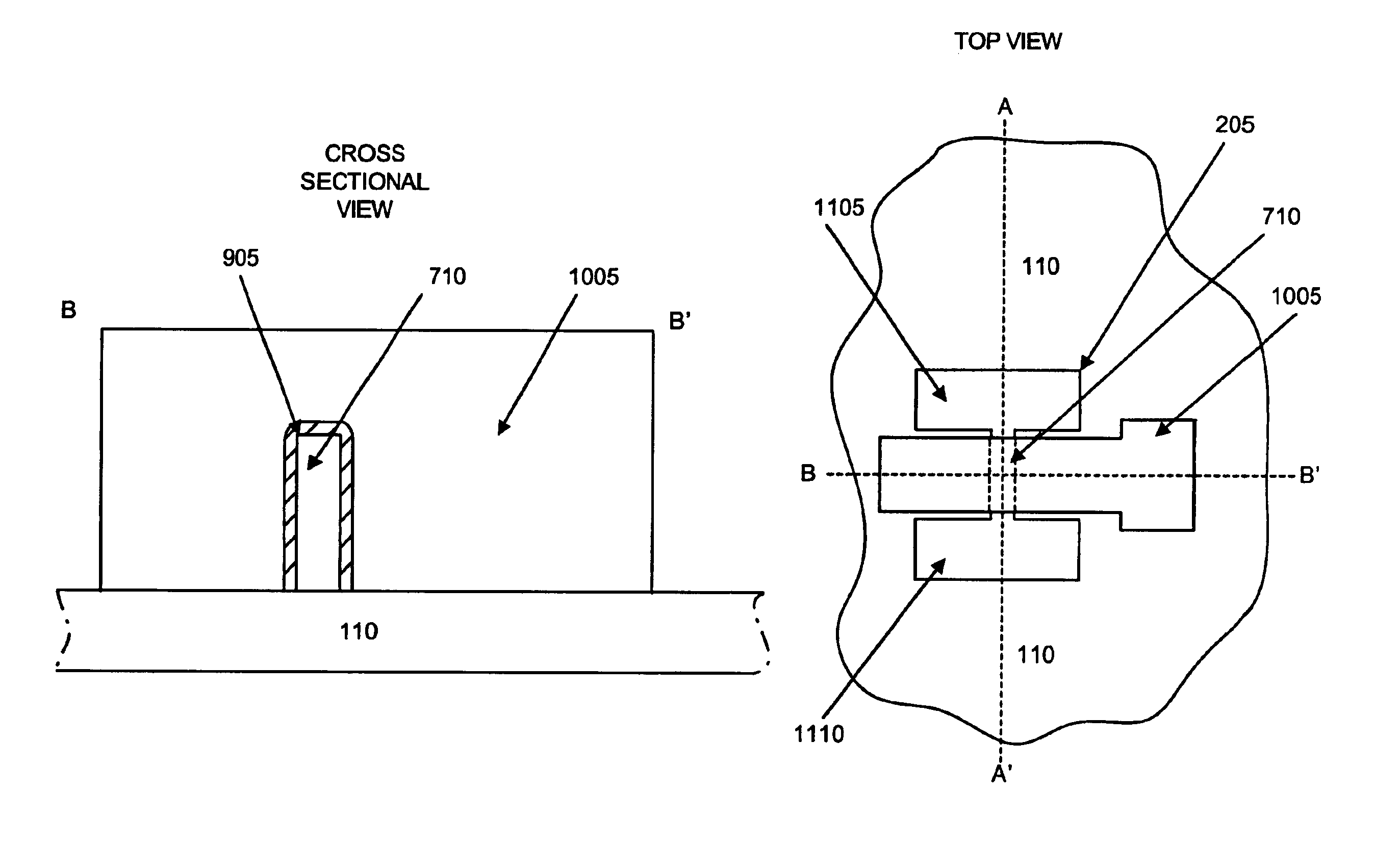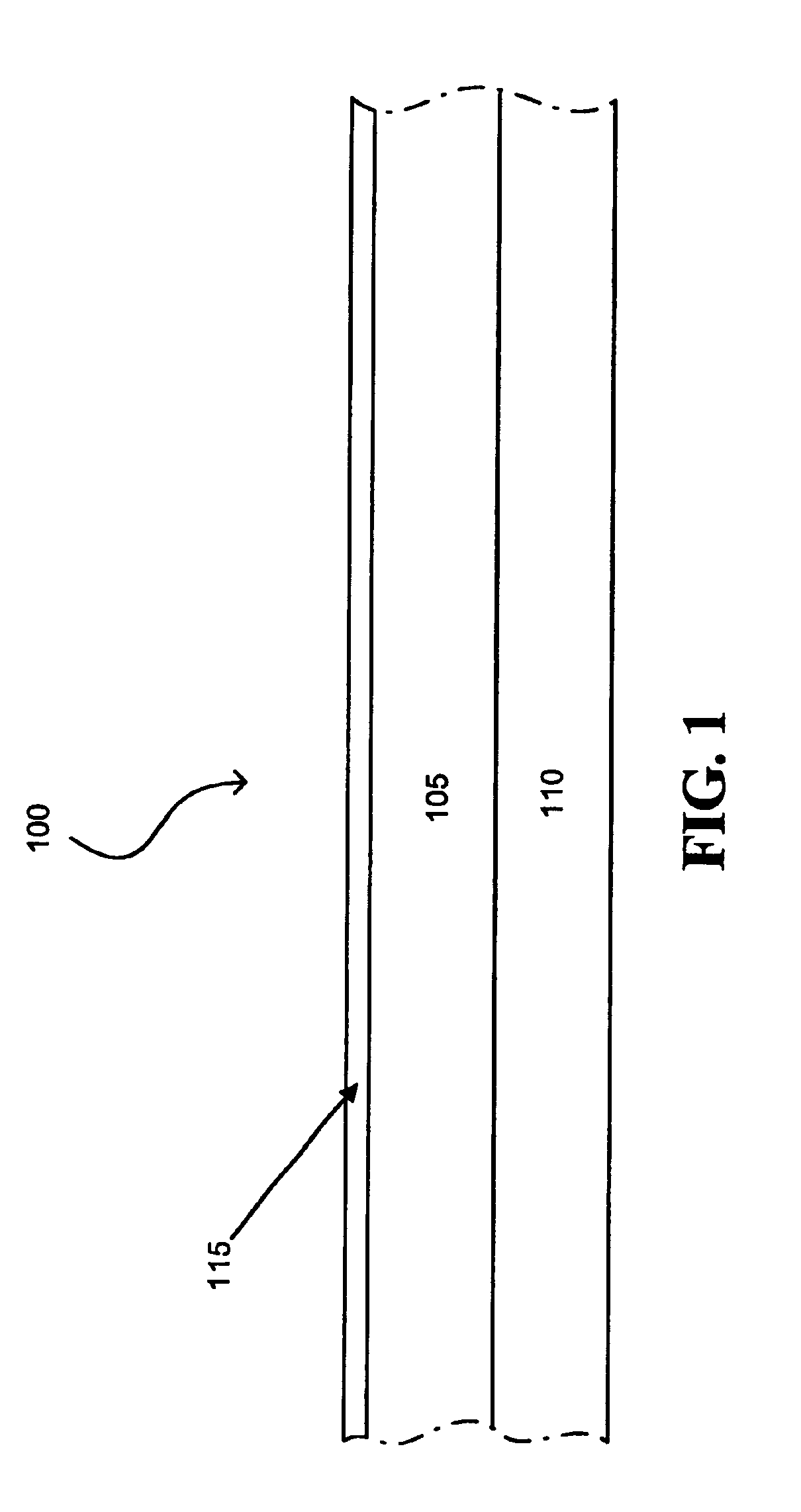Method for forming tri-gate FinFET with mesa isolation
a technology of finfet and mesa isolation, applied in the field of transistors, can solve the problems of increasing difficulty in overcoming, short channel effect, and reducing the design feature below 100 nm, and achieve the effects of reducing the number of transistors, and increasing the difficulty of reducing the design featur
- Summary
- Abstract
- Description
- Claims
- Application Information
AI Technical Summary
Benefits of technology
Problems solved by technology
Method used
Image
Examples
Embodiment Construction
The following detailed description of the invention refers to the accompanying drawings. The same reference numbers in different drawings may identify the same or similar elements. Also, the following detailed description does not limit the invention. Instead, the scope of the invention is defined by the appended claims.
Consistent with the present invention, an exemplary process for forming a tri-gate FinFET is provided. The exemplary process forms a silicon mesa on a FDSOI wafer. A dummy gate that may include, for example, Si3N4, may be formed over the mesa and a layer of tetraethylorthosilicate (TEOS), or any other dielectric material, may then be formed over the mesa and the dummy gate. The dummy gate may then be removed, leaving a trench in the shape of the eventual gate and an active mask may be used to etch a fin channel in exposed portions of the mesa within the trench. A gate may then be formed in the trench over the fin to produce a tri-gate FinFET.
FIG. 1 illustrates a cros...
PUM
| Property | Measurement | Unit |
|---|---|---|
| width | aaaaa | aaaaa |
| thickness | aaaaa | aaaaa |
| thickness | aaaaa | aaaaa |
Abstract
Description
Claims
Application Information
 Login to View More
Login to View More - R&D
- Intellectual Property
- Life Sciences
- Materials
- Tech Scout
- Unparalleled Data Quality
- Higher Quality Content
- 60% Fewer Hallucinations
Browse by: Latest US Patents, China's latest patents, Technical Efficacy Thesaurus, Application Domain, Technology Topic, Popular Technical Reports.
© 2025 PatSnap. All rights reserved.Legal|Privacy policy|Modern Slavery Act Transparency Statement|Sitemap|About US| Contact US: help@patsnap.com



